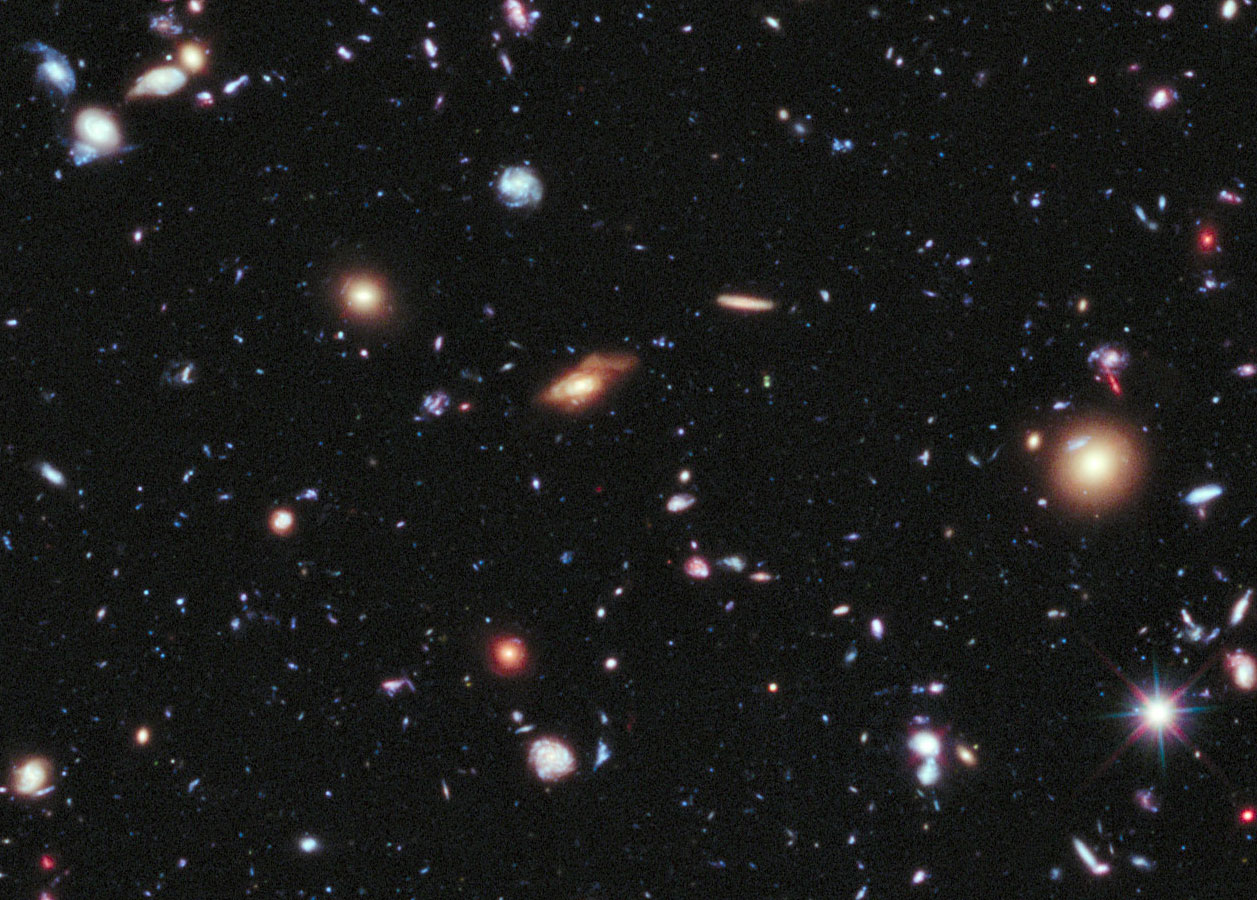Hubble Reveals 13.2B-Year-Old Picture of the Universe
What if you could travel 13 billion years into the past?
It's a question that some of us may ask when seeing another breathtaking image of space, this time taken by NASA's Hubble telescope. Last week, we learned about images taken Fermilab's DEC reaching about 66 million light years into space. NASA published an eXtreme Deep Field, or XDF, photograph detailing a tiny portion of the sky, showing about 5,500 galaxies that appear via extreme exposure of 2 million seconds and via the combination of 2,000 individual images.
The XDF goes back 13.2 billion years in time, and close to the believed beginning of universe 13.7 billion years ago. The youngest galaxies in the picture are shown as they existed only 450 million years after the big bang. "The early universe was a time of dramatic birth for galaxies containing brilliant blue stars extraordinarily brighter than our sun. The light from those past events is just arriving at Earth now, and so the XDF is a time tunnel into the distant past."
The farthest galaxies shown in the images are 13.2 billion light years away, which translates to about 2.6 septillion miles.
Contact Us for News Tips, Corrections and Feedback
Get Tom's Hardware's best news and in-depth reviews, straight to your inbox.

Wolfgang Gruener is an experienced professional in digital strategy and content, specializing in web strategy, content architecture, user experience, and applying AI in content operations within the insurtech industry. His previous roles include Director, Digital Strategy and Content Experience at American Eagle, Managing Editor at TG Daily, and contributing to publications like Tom's Guide and Tom's Hardware.
-
Shin-san Hm. I wonder far we can zoom in on one of these galaxies. Oh, too bad we don't have the CSI Enhance filterReply -
plznote Another blow to the e-peen.Reply
On a serious note, I think the pictures are nothing short of amazing. -
nforce4max ctbaarsMy mind is surprisingly slow if you have enough scientists, no, A scientist.Reply
You should see the inside of a class room. The very moment the teacher opens his or her mouth to lecture half the class crashes then sleeps till about five minutes before the class is due to end. -
pjmelect That's an old photo, it was originally taken by the Hubble by selecting an apparently empty region of space and doing a very long exposure.Reply -
ctbaars They stuck the Hubble up the dark region, with exposure, it found gold nuggets at the back end.Reply
